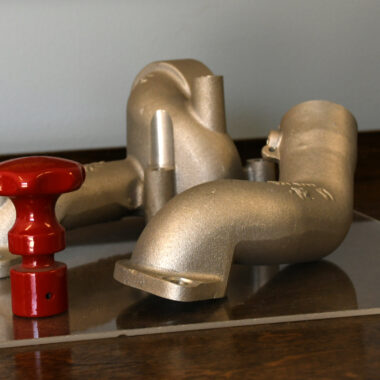Exploring the Craft: All About Aluminum Casting Techniques
Exploring the Craft: All About Aluminum Casting Techniques
Blog Article
Crafting Excellence: How to Achieve High-Quality Light Weight Aluminum Castings Every Time
In the realm of aluminum casting, the quest of excellence is a continuous journey that calls for a careful strategy and an eager understanding of the details entailed. Achieving constant top notch aluminum spreadings requires a detailed understanding of the processes, from picking the suitable alloy to performing exact mold and mildew layouts and meticulously managing spreading criteria. The true proficiency lies in the ability to execute these components flawlessly to create perfect spreadings every time. As we explore the complexities of crafting excellence in light weight aluminum castings, revealing the essential techniques and strategies that bring about impeccable outcomes ends up being critical for those striving for excellence in this specific area.
Understanding Light Weight Aluminum Casting Processes
Light weight aluminum casting procedures, vital in the manufacturing market, include the intricate improvement of liquified aluminum right into solid kinds through a collection of meticulously regulated actions. Recognizing these processes is vital to accomplishing high-quality light weight aluminum castings constantly - about aluminum casting. The key approaches made use of in aluminum spreading are pass away spreading, sand casting, and financial investment casting

Each of these procedures has its advantages and is selected based on elements like complexity, quantity, and wanted coating of the aluminum casting. about aluminum casting. Comprehending the details of these techniques is critical for makers aiming to generate high-quality light weight aluminum spreadings continually
Selecting the Right Aluminum Alloy
Picking the suitable aluminum alloy is a critical decision in the manufacturing of premium aluminum castings. The option of alloy substantially influences the buildings and attributes of the end product. Various light weight aluminum alloys provide differing degrees of toughness, deterioration resistance, machinability, and thermal conductivity. When picking an aluminum alloy for spreading, it is important to think about the specific demands of the application to make sure optimum efficiency.
One of the most generally utilized aluminum alloys for casting is A356 - about aluminum casting. For applications needing high strength, 7075 aluminum alloy is a preferred selection due to its extraordinary strength-to-weight proportion.
Along with mechanical residential properties, factors to consider such as cost, schedule, and post-casting procedures should additionally influence the option of the right light weight aluminum alloy. By meticulously reviewing these elements, manufacturers can guarantee the manufacturing of high-grade aluminum spreadings that meet the wanted requirements.
Applying Proper Mold Layout
Establishing an effective mold style is crucial for making sure the effective manufacturing of top quality aluminum spreadings. Correct mold design plays a substantial role in attaining the preferred qualities of the last product. To apply an effective mold style, factors such as material flow, cooling rates, and component geometry must be carefully taken into consideration.
One key element of mold design is making sure proper filling and solidification of the aluminum within the mold visit the website and mildew dental caries. This involves developing runner and gating systems that promote smooth metal circulation and avoid flaws such as air entrapment or incomplete dental filling. Furthermore, integrating air conditioning networks into the mold style helps regulate solidification prices and lower the threat of porosity or shrinkage defects.

Controlling Casting Parameters

Making Certain Post-Casting Quality Checks
To maintain the high quality of aluminum castings, extensive post-casting top see it here quality checks are essential. After the casting process is finished, it is essential to ensure that the last products fulfill the preferred specifications and criteria.
Dimensional precision is an additional crucial element that must be confirmed during post-casting quality checks. Measurements of key measurements and resistances must be taken to validate that the castings comply with the called for requirements. In addition, mechanical residential properties such as firmness, tensile toughness, and impact resistance may require to be evaluated through material testing to guarantee that the castings possess the required toughness and durability for their intended application.
Verdict
Finally, accomplishing high-quality aluminum castings requires a complete understanding of the spreading processes, selecting the appropriate alloy, designing mold and mildews effectively, managing casting parameters meticulously, and carrying out post-casting top quality checks diligently. By complying with these actions, manufacturers can consistently create aluminum spreadings that fulfill the highest requirements of top quality and performance.
Attaining regular premium light weight aluminum spreadings demands a detailed grasp of the procedures, from choosing the appropriate alloy to carrying out exact mold designs and diligently regulating spreading criteria. The main approaches made use of in aluminum spreading are die casting, sand casting, and financial investment spreading.
Investment spreading, likewise understood as accuracy casting, includes producing wax patterns that are covered in ceramic to develop molds.Choosing the appropriate aluminum alloy is an essential choice in the production of premium aluminum spreadings.Ensuring accurate control over spreading criteria is important for keeping consistency and high click to read quality in light weight aluminum casting production.
Report this page